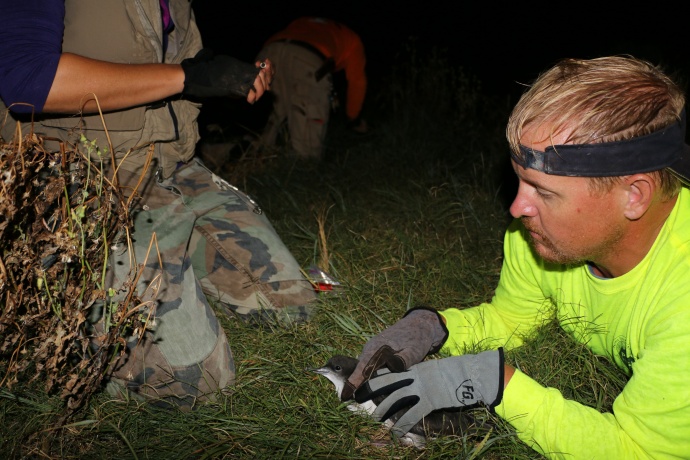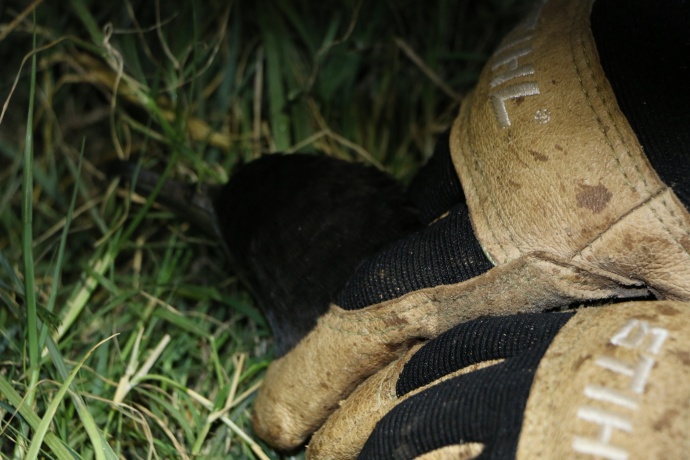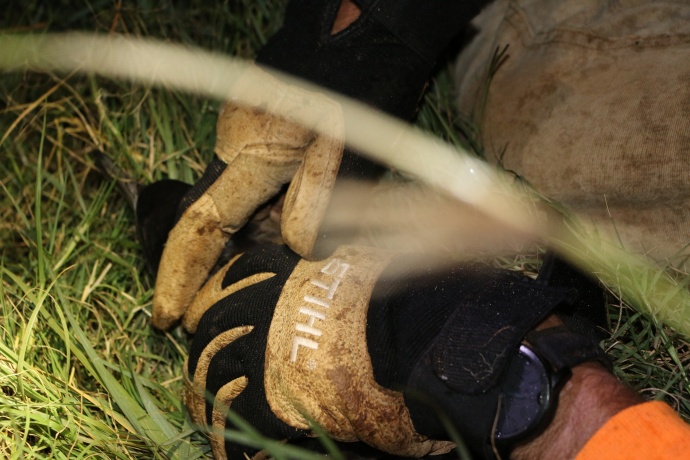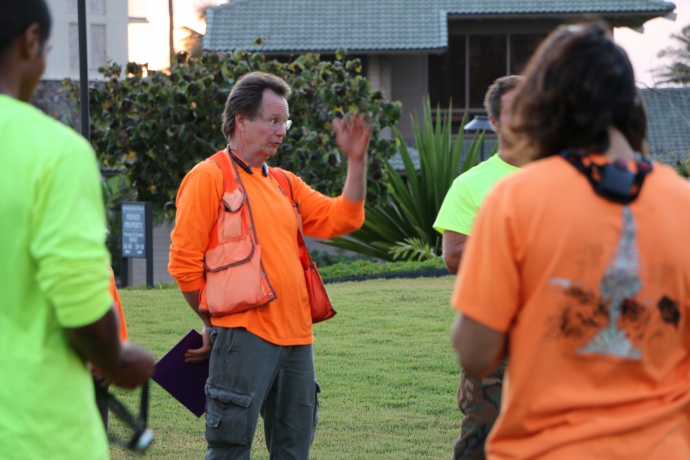Nighttime Banding of Wedge-tailed Shearwaters
By Maui Now Staff
A group of volunteers, led by staff from the Maui Nui Seabird Recovery Project, banded 150 adult wedge-tailed shearwaters (‘Ua’u kani) at a Kapalua colony in West Maui on Friday night.
Wedge-tailedshearwaters tend to return to the same burrows each year and keep the same mate throughout their lifetimes. So each year in mid-summer colonies are visited by researchers to determine active and non-active burrows.
Jay Penniman,the manager of the MauiNui Seabird Recovery Project commented in a state press release saying, “Pairs may skip breeding during some years due to environmental factors, mate loss or habitat disturbance. Our monitoring methods and banding will help shed more light on the frequency of breeding efforts.” The continuation and expansion of population studies is dependent on funding and staffing.
Penniman continued saying, “Wedge-tailed shearwaters populations are present in coastal strand habitat throughout the Hawaiian Islands. While studies have been done in other areas around the world, little work in Maui Nui exists to document the biology and stability of these populations. The banding project helps increase our understanding of these populations.”
Spring nighttime efforts to capture returning adults to look for banded birds recruiting into the breeding population began in 2008. Additionally unbanded adults are banded during the project.
Annual wedge-tailed shearwater chick banding was started by DLNR Division of Forestry and Wildlife biologist Fern Duvall on Maui in 1997, on Molokaʻi in 2000 and on Lānaʻi in 2006. Duvall explains,“We have a hypothesis that Maui Island, with its abundant feral cat, mongoose, dog and rat populations is a sink for the source populations on offshore islets, such as Molokini, which are predator free and where all available breeding locations are filled.”
Officials with the state Department of Land and Natural Resouces said on Friday night, six teams comprised of grabbers, banders and recorders encountered nearly 250 birds. Approximately 100 already had bands.
“After each bird is banded and checked for parasites or viruses, their heads are marked with a small dot of white-out,” according to the announcement. Penniman, Duvall, and volunteers from Maui Land and Pineapple, DOFAW, and from area watershed partnership groups participated in the project.
Penniman explained that the wedge-tailed shearwaters are among the first creatures to colonize the Hawaiian Islands. “The birds provided much of the original organic material that built the islands and it’s possible they helped early Polynesian navigators find land. In modern times fishers often rely on sea-going shearwaters to help them spot abundant fishing grounds. Loss of habitat and human habitation have reduced seabird populations significantly,” authorities said. “They are a critical part of the circle of life,” Penniman said.
In addition to the work at the Kapalua colony, this year during the breeding season, 50 burrows were marked at Kamaʻole Beach Park III to monitor for shearwater reproductive success. Duvall said, “We will now begin identifying banded birds in these burrows to further explore the breeding biology of the wedge-tailed shearwater and gather more data on site and mate fidelity.
***Information courtesy state Department of Land and Natural Resources.





























